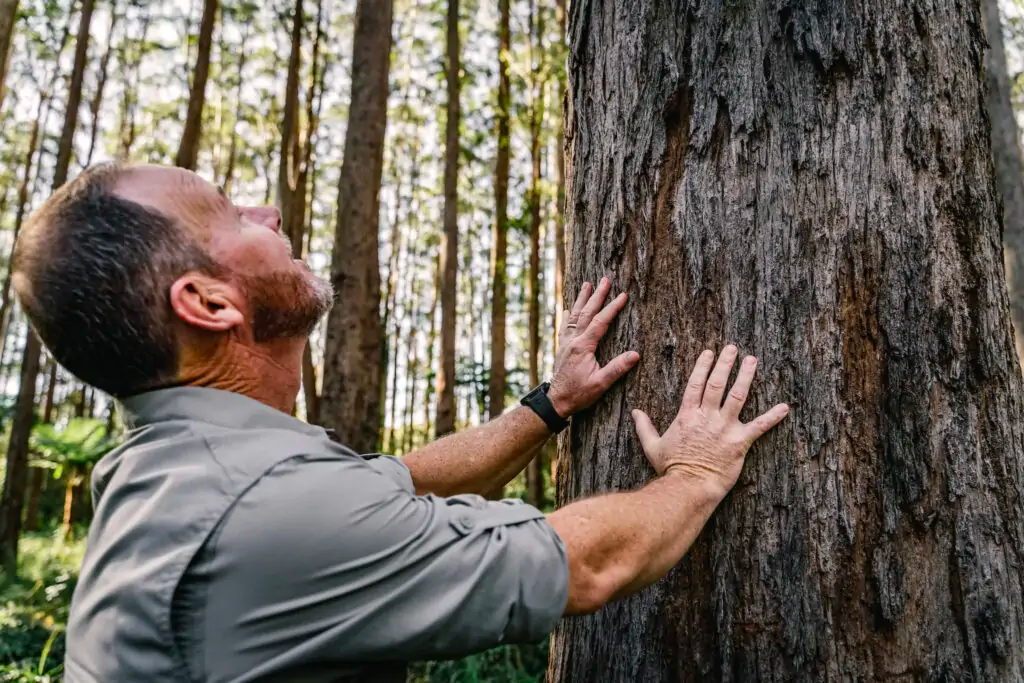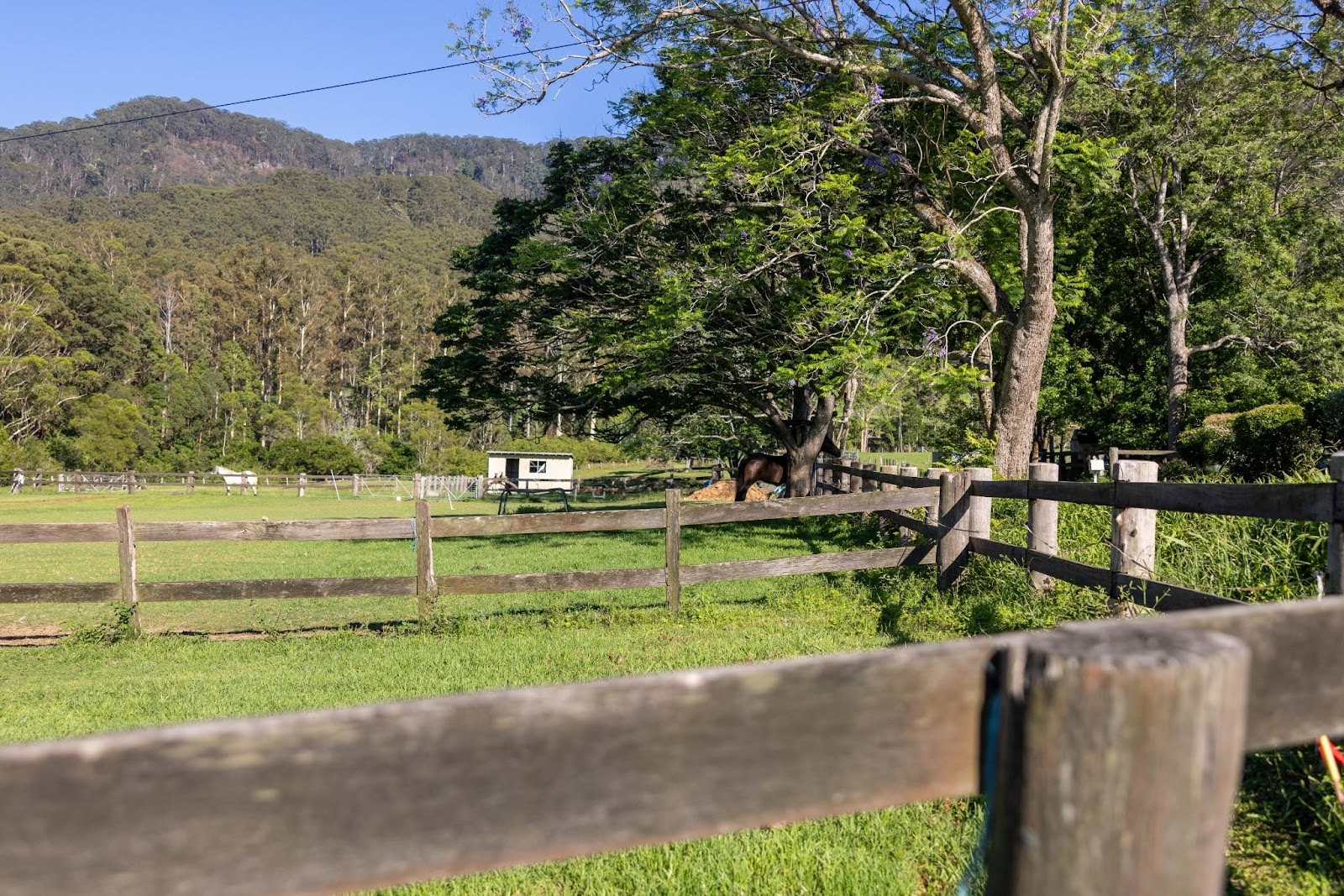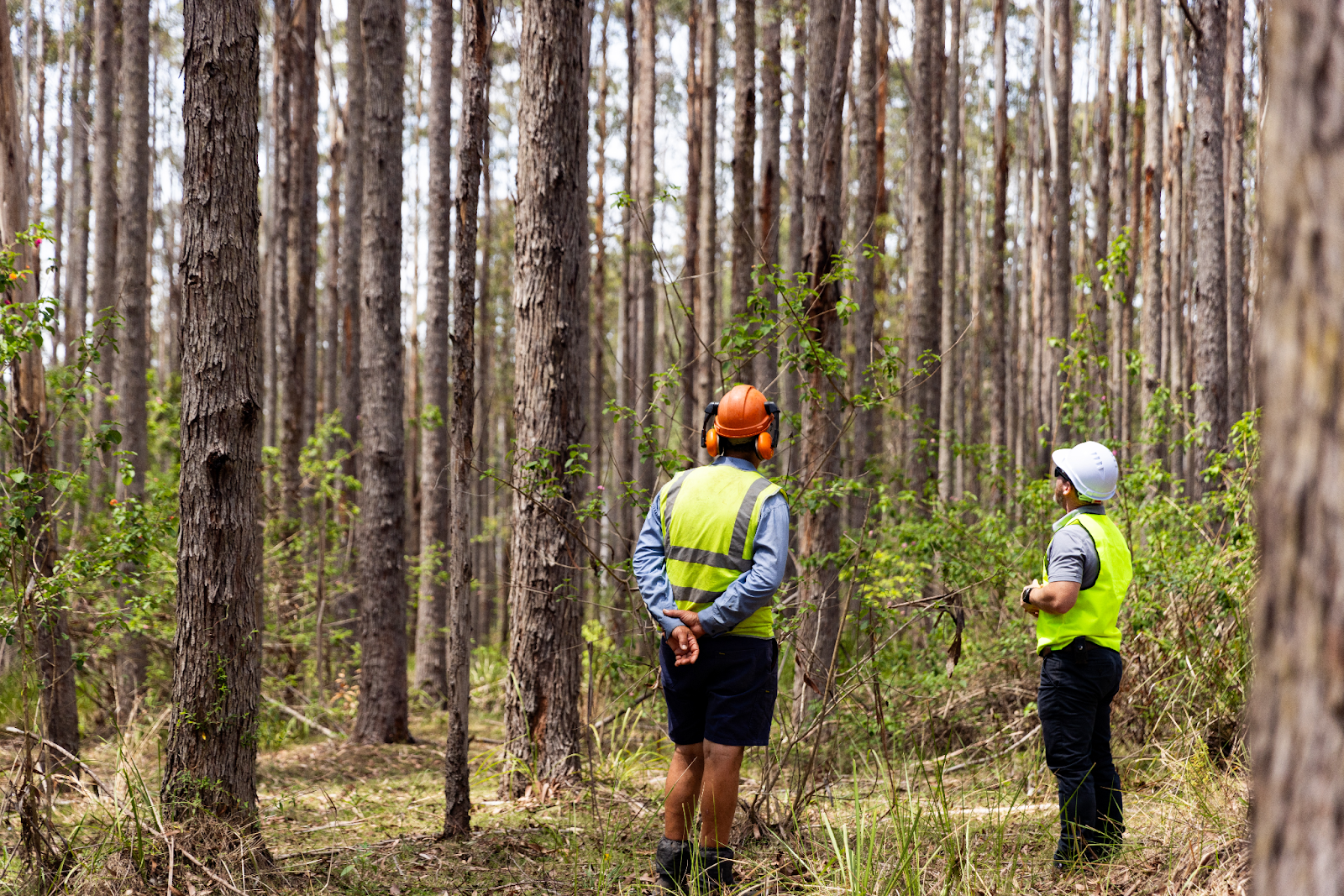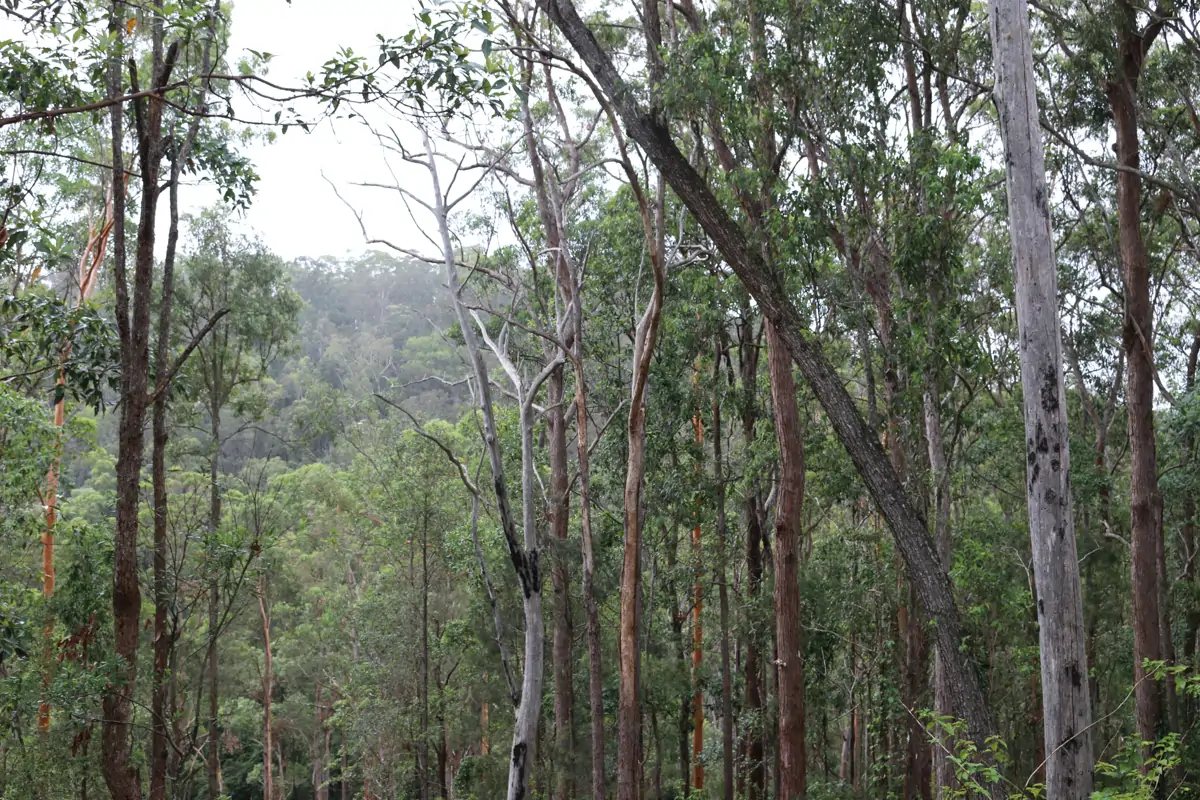Optimal returns from your forest involve cultivating a diverse, healthy mixed-age forest, flourishing with native flora and fauna. This approach allows for potential timber production, offering financial gains while safeguarding the future sustainability of the forest.
Engaging an experienced forest management specialist to assess your private native forest is the first step. A well conducted forest assessment will identify the current health of your forest and its suitability for timber production, whilst recommending the optimal sustainable management practices to deliver the best long-term outcomes.
Some forests may only require fire management, through either hazard reduction burning or intermittent cooler mosaic burns. Whereas others may benefit from a timber harvest ahead of implementation of an ongoing fire management regime. Conducting a sustainable timber harvest, focusing on trees that have reached their potential and nurturing the growth of healthy saplings , fosters the long-term ecological balance of the forest.
Want to expand your income streams? In 2023, landowners in NSW earned between $2,000 to $5,000 per hectare. Moreover, with careful harvesting, landowners can plan (depending on forest type and conditions) another harvest in 15-40 years.
If you are considering the management of your private native forest and want to ensure they are both sustainably managed and deliver maximized returns, then you are in the right place.
5 steps to ensure the success of your private native forest

1. Gain specialist advice
Firstly, ensure you fully understand the present condition of your forest and its suitability for harvest. Things to look out for include: tree species, age, health, location and accessibility. It is also important to consider the ecology of your forest and the protection of forest-dwelling wildlife. Equipped with the understanding of the forest condition, you’ll be better placed to understand its potential and the options you have to achieve the best outcomes.
Sustainable Forest Management provides ongoing specialist advice on how to get the best long term return from your forest. We offer free inspections to assess forest condition, fire management and suitability for harvest.
2. Choosing the correct management technique for your forest

Cool mosaic burns
Fire has been used by Australia’s traditional owners of the land as the primary tool to manage land and forests for thousands of years. Cool mosaic burns require careful planning and execution, and provide optimum ecological benefits as well as mitigate the risk of wildfires.
Cool burns, take into account wind direction, temperature, topography, seasonality and time of day. Their aim is to remove any non-native species through a slow moving fire that enables native fauna and insects time to move away whilst protecting the soil quality. This in turn attracts more native flora and fauna to come back.
Performing these cool burns by applying fire to different areas at different intensities, scales and times, to form a mosaic of burnt and unburnt private native forest is a practice known as Landscape Mosaic Burning, and one that makes up a fundamental part of sustainable forest management for many private native forest owners.
Light intensity timber harvesting
Single tree selection and thinning is a silvicultural system in which single trees or small groups of trees of various ages are harvested. This method is suitable for promoting regeneration of shade-tolerant species, or growth of preferred species or individual trees.
High intensity timber harvesting
Some forests will benefit from a higher intensity harvest to open up the forest and improve the timber stand. It is important to engage a professional forest manager, focused on the long-term health of your forest for optimal guidance on the sustainable management of your forest.
For further reading on cool burns, forest thinning and timber harvests visit our dedicated blog article on the top sustainable forest management techniques.

3. Documentation
Make sure that you have the correct documentation and approval to comply with the Local Land Services: Silviculture Private Native Forestry Code of Practice. In NSW Private Native Forest (PNF) Plan compliance is paramount and this is something Sustainable Forest Management are highly experienced with.
The guidelines provide landowners and private native forestry contractors an understanding of:
- NSW forest types
- important silvicultural practice & procedures
- social and economic factors that influence silvicultural practice
Note: The use of these guidelines and the optimum silvicultural regime for any given forest depends on many factors, including management intent, nature of the local industry, economic considerations, forest type and species, and the condition and structure of the forest (Local Land Services).
4. Timing
Timing the harvest correctly is vital for the long-term well-being of the forest. Factors such as the forests age, regeneration stage, seasonality, and bushfire forecast influence the optimal harvesting time, and this varies for each forest. The implementation of fire management is also highly time-sensitive, with considerations like wind direction, temperature, time of day, and seasonality being of critical importance. Your specialist forest manager will provide a forest management plan tailored to your forest’s individual needs.
5. Reforestation and ongoing forest management.
Healthy forests are more commonly suited to light intensity single tree selection/thinning. Whereas an unhealthy overmanaged forest may require an initial higher intensity harvest, followed by cool mosaic burning to promote regeneration of native flora. . Sometimes replanting of tube stock may be necessary on overmanaged forest.
Every forest is different and therefore its sustainable forest management plan will be somewhat unique. For advice and guidance on what your private native forest needs to achieve its potential, get in contact with Sustainable Forest Management.

Ready to take the first step?
As leaders in sustainable management of private native forest along the NSW North Coast, Sustainable Forest Management help dozens of private landowners each year to successfully manage their forests for the best long-term outcome. Join the community of sustainably managed forests. Be the next landowner we help. Get in contact or call us on 1300 367 378 to arrange a free assessment and valuation of your forest.



